25 Best South American Novels: Exploring a real literary Gem!
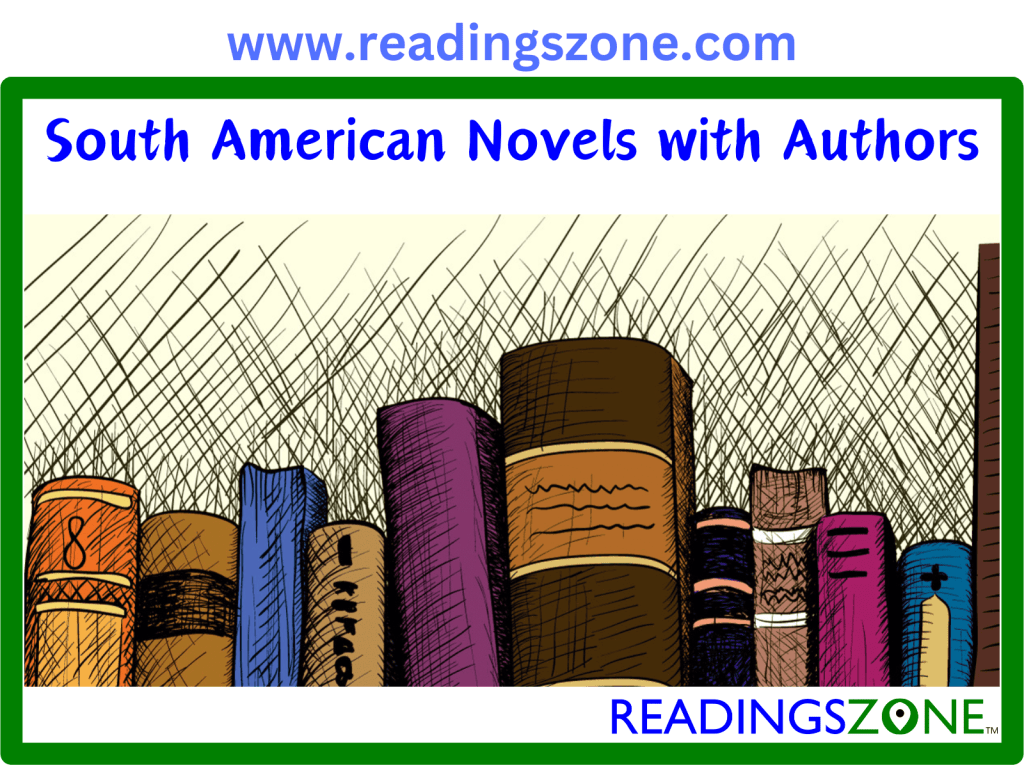
Table of Contents
ToggleImagine this: you’re cozy by a warm fire on a rainy night, and someone begins to share the most incredible stories you’ve ever heard. There are tales of enchanting towns where butterflies fall like rain, courageous kids embarking on amazing journeys, and families holding secrets that last for a hundred years. Guess what? South America is home to some amazing storytellers. Let’s join on a journey through the best South American novels. Discover the works of great authors like Gabriel Garcia Marquez, Isabel Allende, and Mario Vargas Llosa. Their stories will take you to a world filled with magic, love, and revolution as well.
Their books read like the best fireside tales! Yes, these authors have a unique talent. They make you feel the magic in everyday life. They write about love, family, and adventure in ways that quicken your heartbeat. Writers from Colombia to Argentina, Brazil to Chile, have crafted amazing stories. People everywhere are captivated by their words. Let me share some incredible books and the talented authors behind them. These stories will make you laugh, cry, and perhaps even spark a bit of magic in your heart.
Further explore the best 50 African novels with gist
Historical Context of South American Literature
Get ready to explore the amazing world of South American Literature, which has been around for centuries. This incredible journey began during colonial times. Yes,do you have any prior ideas abou that? If not just listen to this-that was a big time period, when brave men and women fought for freedom and identity. As a result, literature became a powerful tool for people to express their feelings about their country, politics, and social issues.
From the early days of Spanish and Portuguese colonization to the present day, South American Literature has been a unique blend of native stories and European ideas, creating a rich and varied literary landscape. In fact, many renowned authors, such as Jorge Luis Borges and Pablo Neruda, used their writing to comment on the social and political issues of their time. For example, Borges’ short stories often explored the complexities of Argentine identity, while Neruda’s poetry expressed his passion for social justice.
Magical Realism: A Signature of South American Novels
Now, let’s talk about one of the coolest features of South American Literature: Magical Realism. This style of writing, made famous by the legendary author Gabriel García Márquez, is like a dream come true. It’s a world where magic and reality coexist, and readers get to experience something strange yet familiar. Are you still unclear about the situation?
Imagine reading a story where fantastical events happen in everyday life, and it all seems completely normal. That’s what Magical Realism is all about. This writing style has become a hallmark of South American Literature, and it’s been inspiring authors and readers around the world. For instance, García Márquez’s famous novel “One Hundred Years of Solitude” is a classic example of Magical Realism, where the fictional town of Macondo is filled with magical and mysterious events. Other authors, such as Isabel Allende and Mario Vargas Llosa, have also used Magical Realism in their writing, creating a unique and captivating literary style that’s distinctively South American.
1. “One Hundred Years of Solitude” by Gabriel García Márquez, a Nobel laureate.
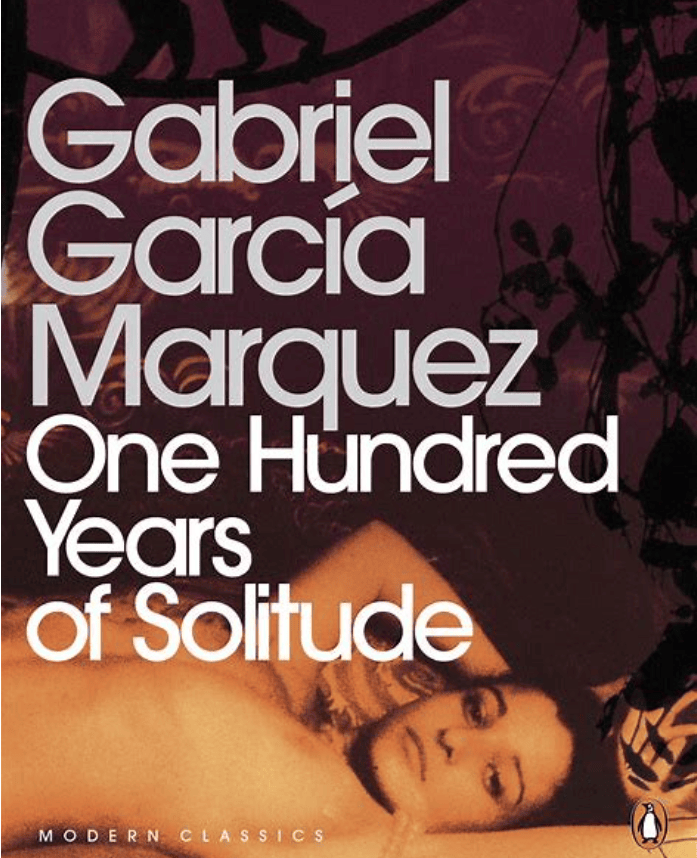
Summary
“One Hundred Years of Solitude” is the story of seven generations of the Buendía family living in the fictional town of Macondo. José Arcadio Buendía, the founder of the family, and his cousin Úrsula get married at the beginning of the book. They leave their hometown and find Macondo in the end. As the town grows, it faces many problems, such as wars, love affairs, and strange supernatural events.
People love this book because it has magical realism, which means that strange things happen in everyday situations. One character, Remedios the Beauty, goes to heaven while folding laundry, and butterflies follow another character around.
The book also talks about things like being alone, fate, and how history repeats itself. The Buendía family seems destined to make the same mistakes over and over again, even though they try to avoid their fate.
There are a lot of characters in the story with similar names, which shows how the family’s past repeats itself. People love the book because it has a great story, a unique style, and an effect on Literature.
There is more to this story than just a family. It shows Latin American history and culture. “One Hundred Years of Solitude” by Gabriel García Márquez remains a significant work that has an impact on readers and artists all over the world.
2. “The House of the Spirits” by Isabel Allende(Chile)

Pic credit: Pinterest
Summary:
“The House of the Spirits” by Isabel Allende is a novel from Chile. Over several generations, it tells the story of the Trueba family through the lives of two women: Clara and her granddaughter Alba. We meet Esteban Trueba at the beginning of the story. He builds a big house and gets rich. He married Clara, a woman who is magical and can do things like see the future.
There are magical things in the book, like ghosts and other strange things that happen every day. It talks about important events in the family’s life and Chile’s past, like social struggles and changes in the government.
It’s about love, family, and standing up for what’s right. It shows how the lives of the characters are linked and how what they do affects people who will come after them. The book is an exciting and emotional story because it combines actual events and people with made-up ones. People like “The House of the Spirits” because it has strong characters, especially the women, and a mix of magic and real life. It is a well-known piece of Latin American Literature.
3. “Ficciones” by Jorge Luis Borges(Argentinian author)
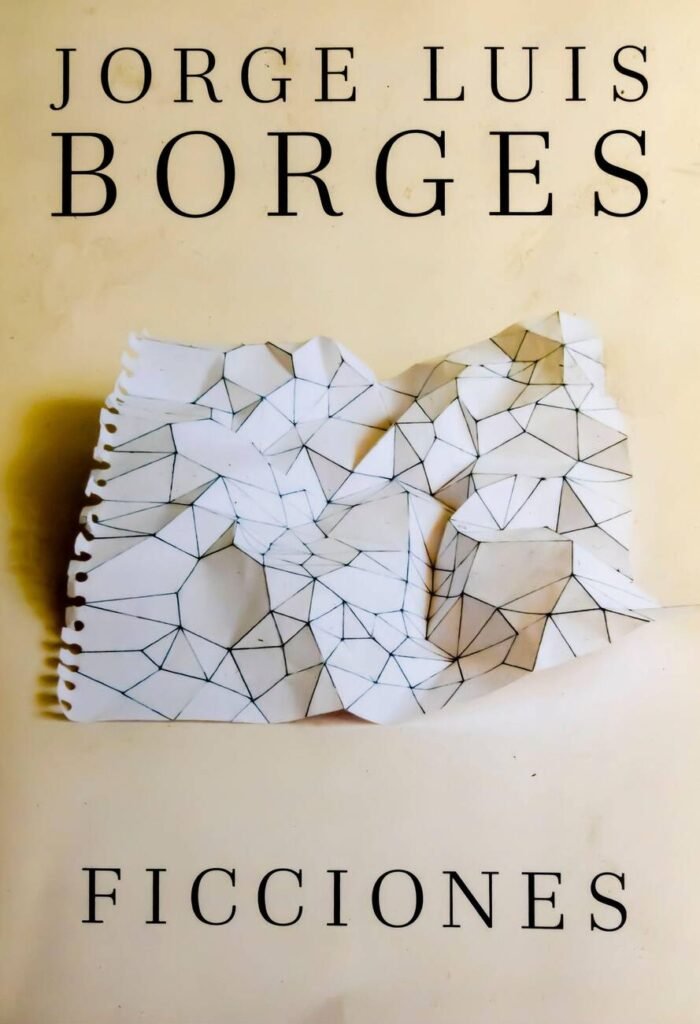
Pic credit: Alamy Stock
Summary:
“Ficciones” is a book of short stories written by Argentinian author Jorge Luis Borges. There are two parts to the book: “Artifices” and “The Garden of Forking Paths.” People love the stories because they have new ideas and exciting writing styles.
A lot of the stories in “Ficciones” are about things like infinity, mirrors, labyrinths, and how time and reality work. Borges plays with ideas about the world and how fiction can go in any direction. One well-known story, “The Library of Babel,” imagines a world that is like a vast library with all the possible books.
“The Garden of Forking Paths,” another story, is about a book and a maze that both have a lot of different ways to get to different places. The stories are not like ordinary stories; they are more like puzzles or philosophical studies.
People love “Ficciones” for how creative and profound it is. Borges’s work is innovative and makes you think about exciting things. It is one of the most important books of modern times and has influenced many other writers and thinkers.
4. “The Feast of the Goat” by Mario Vargas Llosa(Peruvian)
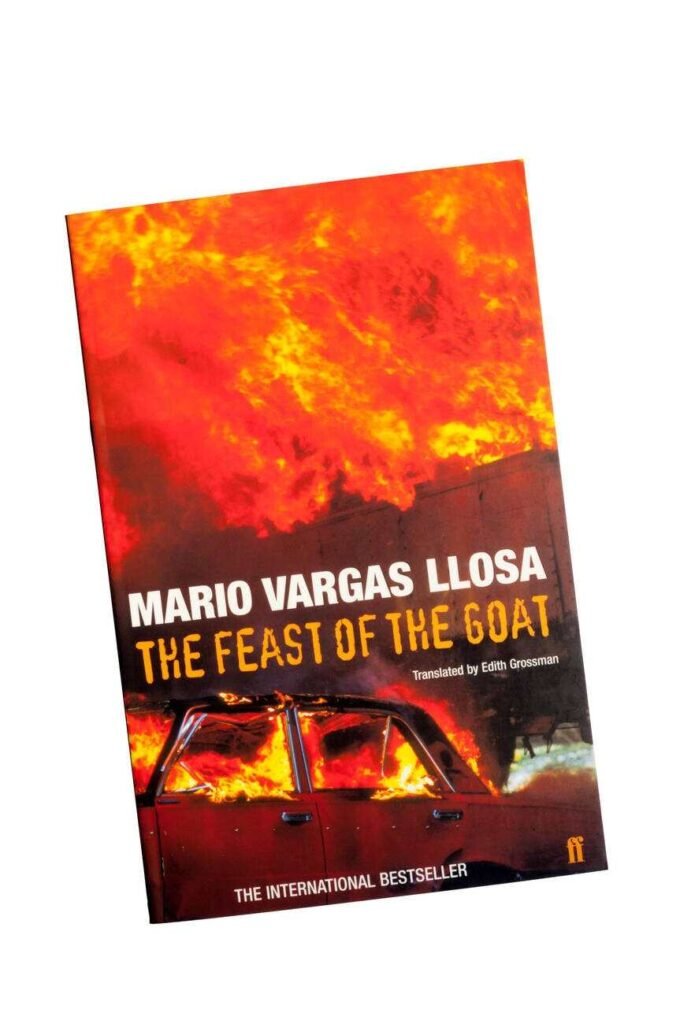
Pic credit: Alamy Stock
Summary:
“The Feast of the Goat” by Peruvian author Mario Vargas Llosa, a Nobel Prize laureate, is known for his politically charged novels that explore power, corruption, and societal change.
“The Feast of the Goat” is a novel by Mario Vargas Llosa, a Nobel Prize-winning author from Peru. It is mainly about the last few days of Rafael Trujillo’s rule as ruler of the Dominican Republic. It tells the story from three main points of view.
First, it’s about Urania Cabral, a woman who goes back to the Dominican Republic after a long time away and talks about the terrible things that happened to her during Trujillo’s rule. Second, the book also gives an inside look at Trujillo’s closest friends and family, showing how afraid and dishonest they are. Third, it talks about Trujillo’s murder, including the events that happened and the people who planned his death.
The novel blends actual historical events with fictional elements. It explores multiple themes like murder, power, and how a dictatorship affects people and society. “The Feast of the Goat” is a strong story about a wrong time in Dominican history. It also shows how an authoritarian leader can hurt a country and its people. Many people love this book because it tells vivid stories and looks into the complicated issues of power and defiance.
5. “Hopscotch,” by Julio Cortázar, an Argentine writer, is celebrated for his experimental narrative structures and surreal storytelling.
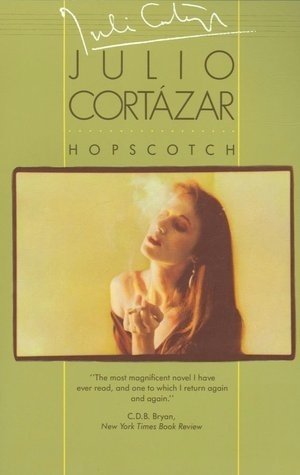
Pic credit: Pinterest
Summary:
The book “Hopscotch” by Argentine author Julio Cortázar is a unique novel. It’s famous for having an unusual shape. “Hopscotch” offers a unique reading experience: it can be read traditionally from start to finish or by jumping between chapters as the author suggests, forming an entirely different story. This innovative structure allows readers to engage with the narrative in multiple ways!
The novel is mainly about Horacio Oliveira, an Argentine thinker who lives in Paris. It looks into his interactions, especially with La Maga, a woman. The story takes place in Parisian artistic areas and then in Buenos Aires.
“Hopscotch” is about more than just a story. It’s also an attempt to write better. The author writes the book in a way that defies the usual method. The book explores thoughts on love, loss, and the search for meaning. There are philosophical thoughts, silly words, and literary puzzles all over it.
People think this book is the best work of Latin American writing and a groundbreaking example of how to tell a story. Cortázar’s “Hopscotch” makes readers feel like they are active participants in the story itself.
6. “The Alchemist”, by Brazilian author Paulo Coelho

Pic credit: Shutt erstock
Summary:
Brazilian author Paulo Coelho achieved international fame with his novel “The Alchemist,” a philosophical story that has inspired millions worldwide.
“The Alchemist” is a novel by Paulo Coelho, a Brazilian author. The story is about Santiago, a young shepherd who wants to find a prize in Egypt. He leaves his home in Spain to look for it because he thinks it’s his fate to do so.
Santiago meets many interesting people on his trip. One of them is an alchemist who teaches him how to listen to his heart and read life’s signs. The story is about following your dreams and finding your path in life. It has parts of theory, magic, and spirituality.
The main idea of the book is that the path and following your dreams are what matter most. “The Alchemist” is known for its simple yet profound storytelling narratives that are both easy and deep. It has inspired readers all over the world.
You may also be interested in reading –9 Life-changing books like The Alchemist
7. “Pedro Páramo,” by Juan Rulfo (Mexican)
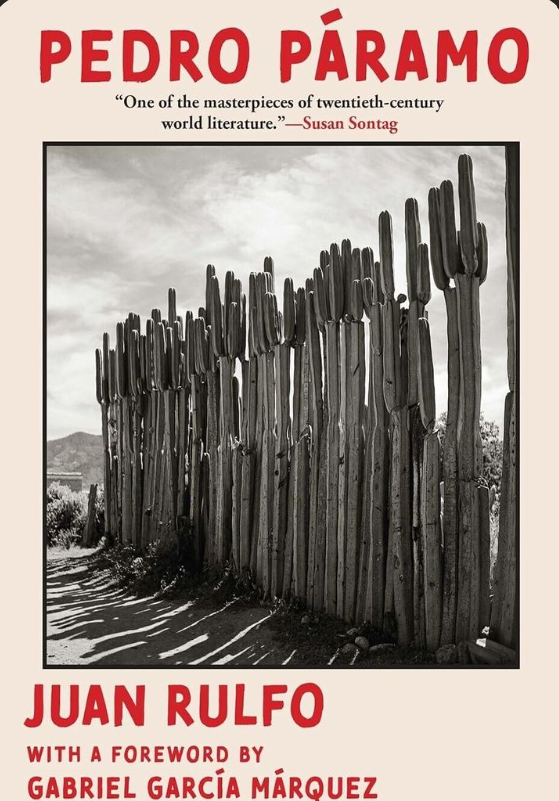
Juan Rulfo is a pivotal figure in Mexican Literature, known for his novel “Pedro Páramo,” a groundbreaking work in the magic realism genre.
“Pedro Páramo” is a book by Juan Rulfo, a Mexican author. In the story, there is a young man named Juan Preciado who goes to the ghostly town of Comala to look for his father, Pedro Páramo. When he arrives, he discovers that the spirits of people who once lived there inhabit the town.
The narrative tells the story of Pedro Páramo, a wealthy and feared farmer, and the people of Comala, jumping between the past and the present. What does the past mean for the present? The book also explores love, power, and those things.
“Pedro Páramo” is famous for its poetic, dreamlike style and unique way of telling a story. People think of it as a masterpiece of Mexican writing and a significant work in Latin American Literature. A lot of writers have been affected by this book, which is known for having a strange and scary atmosphere.
8.”The Hour of the Star” by Clarice Lispector
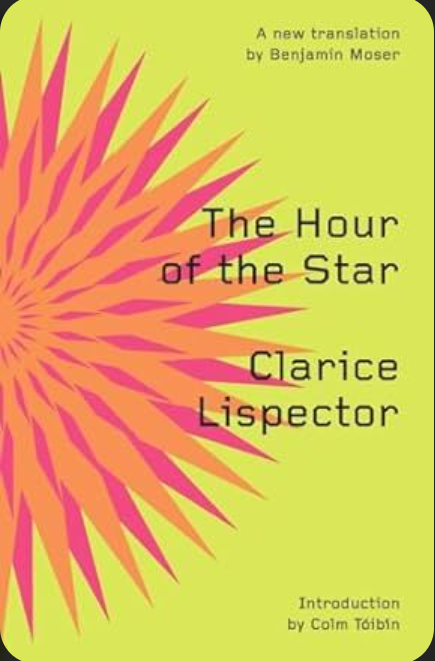
Summary:
“The Hour of the Star” by Clarice Lispector, the Brazilian author who was born in Ukraine, is known for her thoughtful and original books that explore identity, existence, and the human situation.
“The Hour of the Star” is a book by Clarice Lispector, a Brazilian author who was born in Ukraine. The story is about Macabéa, a poor young woman from Rio de Janeiro. She is poor and has dreams that she can’t come true. She is from the northeast of Brazil.
A man named Rodrigo S.M. tells the story, and he often thinks about his work and the act of telling stories. Macabéa’s life is simple and sad. She works as a typist and is often ignored or hurt by most of the people she works with. Even though things are tricky for her, she keeps her innocence and hope.
Poverty, identity, and the meaning of life are some of the things that the book talks about. People know it for its intellectual depth and unique way of telling stories. “The Hour of the Star” is thought to be Lispector’s most important work because it shows how she can combine strong feelings with complicated ideas.
9.”2666,” by Roberto Bolaño(Chilean)
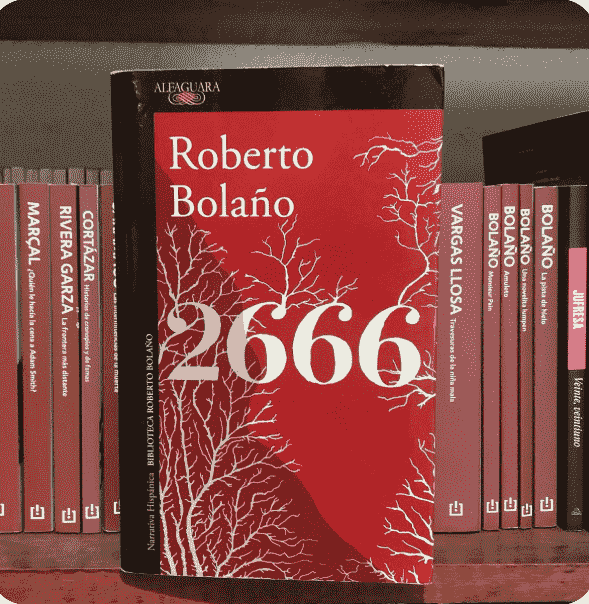
Summary:
Roberto Bolaño, a Chilean author, became famous after his death with his extensive work “2666,” which explores how art, crime, and history are connected.
“2666” is a novel by Roberto Bolaño, who is from Chile. The book is long and complex to understand. It’s split into five parts, and each one is about a different character or story. The book unfolds in various locations, including Europe, the US, and Mexico, particularly in the fictional town of Santa Teresa, modeled after Mexico’s Ciudad Juárez.
The book contains many themes and stories, with a notable one being the unsolved brutal crimes against women in Santa Teresa. Characters like academics searching for a mysterious author, a reporter covering a boxing match, and a police officer investigating the crimes link different parts of the book.
“2666” is known for its broad subject matter, which includes love, art, violence, and the nature of evil. Many people think that this book is Bolaño’s best work. And love how deep, complicated, and powerfully told it is. It’s a challenging but rewarding read, often seen as a significant work in contemporary Literature.
10. “The Obscene Bird of Night” by José Donoso
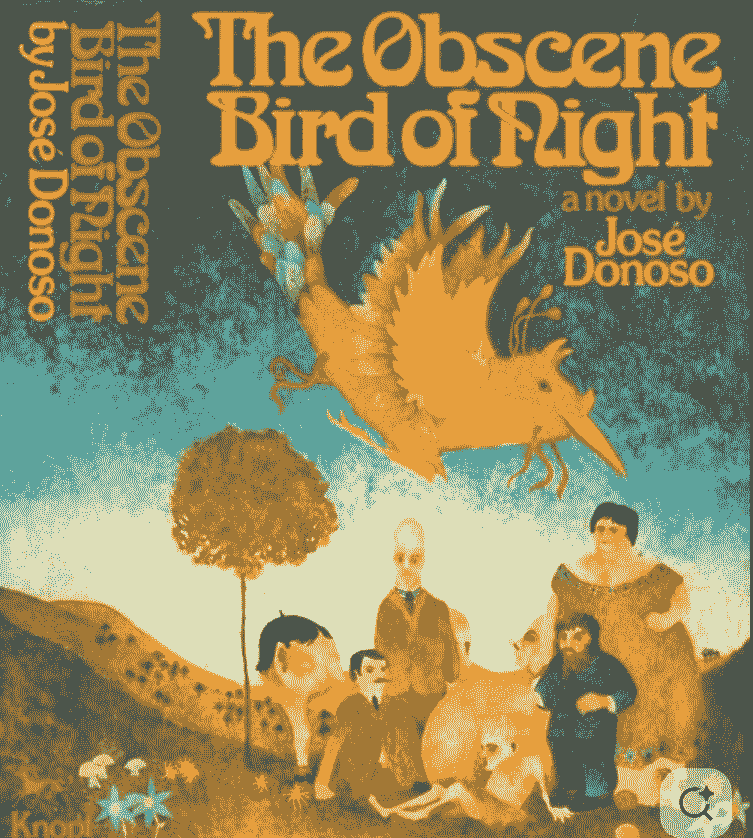
Pic credit: Pinterest
Summary:
Notable Latin American writer José Donoso is known for his book “The Obscene Bird of Night.” Donoso’s works explore identity, madness, and the strange parts of human life in ways that blur the lines between truth and fantasy.
“The Obscene Bird of Night” is a novel by Chilean author José Donoso. The story is complicated and strange. It’s about a boy named Humberto Peñaloza, who goes from being poor to working as a caretaker in a convent and then as a personal assistant for a wealthy family. There are mystical and creepy parts to the story that make it hard to tell the difference between reality and dream.
The book is about identity, fear, and how society is falling apart. It shows a dark and skewed picture of the world, with people often going through gross and strange things. The story is also about the fall of a wealthy family in Chile, which reflects more significant social and political issues.
The story in “The Obscene Bird of Night” is known for being hard to follow because it is full of symbols and complicated images. People think it’s one of the most important books ever written in Latin America, especially in the magical realism genre. People praise the book for being unique and for going deep into the human mind.
11. “The Kingdom of this World” by Cuban writer Alejo Carpentier
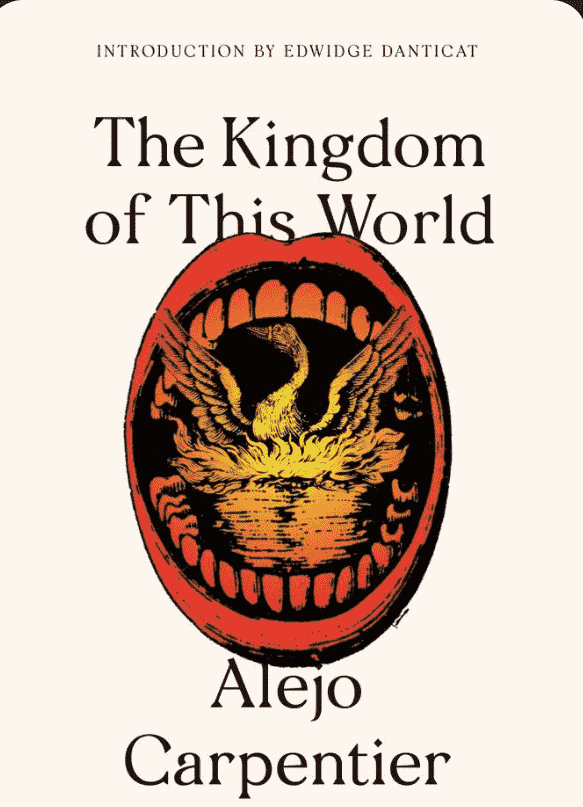
Summary
“The Kingdom of this World” goes into more detail about the complicated Haitian Revolution and shows how power changes hands. The story depicts new leaders rising and falling after the liberation of the enslaved people. The enslaved person Ti Noel sees many masters come and go, including the famous Toussaint Louverture. The book reveals that the dream of freedom often intertwines with greed and abuse.
‘Magical Reality’ by Carpentier is fundamental. In this style, magical or supernatural things happen along with actual events. Back then, people often mixed up stories and actual events, and this painting shows how they saw the world. This method turns the book into more than just a history book; it also turns it into a rich, imaginative story.
The book also examines the idea of cultural identity.. With its mix of African, European, and native elements, Haiti becomes a symbol of how cultures clash and mix. In Carpentier, he shows how beliefs and traditions from different countries can clash and mix in complicated ways.
“The Kingdom of this World” is more than just a history book. It’s an idea about culture, power, and the human spirit. It’s hard to understand but beautifully written, and it offers you a unique window into a turning point in history and how it changed things for good.
12. “Like Water for Chocolate,” by Laura Esquivel(Mexican author)

Pic credit: Alamy Stock
“Like Water for Chocolate” is a novel by Mexican author Laura Esquivel. This book was first published in 1889 in Mexico and in 1922 in English. The story is about a young woman named Tita who falls in love and lives in Mexico. Tita’s family has a custom that says she can’t marry Pedro, even though she loves him. People say that the youngest daughter, like Tita, can’t get married and must take care of her mother until she dies.
The story shows how Tita shows how she feels about cooking—the feelings she has magically make the people who eat her food feel the same way she does. The book has magical parts as well as real-life problems like love and family stress.
Tita has a hard time with her family’s rules, her love for Pedro, and her desires as the story goes on. People also know the book for its recipes and talks about how important food is in Mexican society and family life.
“Like Water for Chocolate” is a story about love, family, and custom. It has a unique mix of magical realism and food-related elements. It makes you feel emotional, and the way it links food to those feelings is unique.
13.” An Episode in the Life of a Landscape Painter” by César Aira(Argentina)
The book “An Episode in the Life of a Landscape Painter” by César Aira is set in the 19th century. It is about the real life of German landscape painter Johann Moritz Rugendas. The story is about Rugendas, an artist who wants to use a painting style based on Alexander von Humboldt’s ideas about nature to capture the scenery of South America, especially Argentina.
People like this book because it talks about art, nature, and how sudden events can change a person’s life. As Rugendas goes through Argentina, something significant happens to him: a lightning storm badly hurts him, changing his face and the way he sees the world. This event has a considerable effect on how he makes art and lives his life.
Aira’s story is both realistic and unbelievable because it combines historical facts with imaginative fiction. The book is short, but it’s very dense. It has vivid pictures of South America’s landscapes and deep thoughts about what art, observation, and experience are all about.
“An Episode in the Life of a Landscape Painter” is a one-of-a-kind story that mixes history, art, and a deeply personal journey in a way that makes you think. It’s a reflection on how sudden events can have a significant effect on an artist’s work and point of view.
14. “Men of Maize,” by Miguel Ángel Asturias, a Nobel laureate, Guatemalan writer
“Men of Maize” is a novel by Miguel Ángel Asturias, a Nobel Prize-winning Guatemalan writer. People love this book because it tells stories that are both simple and deep, using mythology, folklore, and social problems. The book primarily focuses on the lives of native people in Guatemala and their deep connection to maize, which for them is not just a crop but also a sacred part of their culture.
The story shows how the traditional, spiritual ways of the native people are at odds with the modern, profit-driven approach of outsiders, especially landowners and corn exporters. This fight is a smaller version of a more significant battle between protecting nature and using it for profit.
Asturias writes in a style known as “magical realism,” which combines magical or mythical elements with real-life events. Incorporating their beliefs with the harsh facts they face, this style helps show how the native characters see and act in the world.
Each part of the book tells a different story, but they are all linked by the theme of maize and the cultural and social battles of the native people. People love “Men of Maize” because it uses poetic language and shows how indigenous communities deal with cultural and environmental problems firmly. People who read this book will think a lot about how people, nature, and society are connected.
15. “Kiss of the Spider Woman,” by Argentine author Manuel Puig
“Kiss of the Spider Woman” is a novel by Manuel Puig, an author from Argentina. The story takes place in a jail and is mainly about Valentin and Molina. Valentin is in prison for political reasons, and Molina is there for a sexual crime. The book stands out because it mostly tells the story through conversation, with little action or description.
Molina is currently in prison for corrupting a child. He says that he is gay. He often gets lost in a world of fantasy and movies, in movies and dreams, which he tells Valentin in great detail.
Valentin, on the other hand, dedicates himself as a rebel to his cause. At first, he doesn’t trust Molina and stays away from her, but as the story goes on, their relationship grows stronger. Even though they are different, the book shows how they can find comfort and understanding in each other’s company.
Since it takes place in South America during a time of political unrest, the book also deals with challenging issues like power abuse and violations of human rights. It gives an unmistakable picture of how hard life is in jail and how bad things are in the political world outside.
Molina’s loyalty is put to the test as their bond grows. In trade for information about Valentin’s political activities, the police offer to set him free. It builds up to a dramatic end that has a massive effect on both of their lives.
“Kiss of the Spider Woman” is more than just a story about a special friendship. It also makes a point about politics, society, and how people connect. This book is compelling and moving, and it makes you think about love, suffering, and freedom.
16.”Fever Dream” by Samanta Schweblin, a contemporary Argentine author
“Fever Dream” is a book by Samanta Schweblin, a contemporary author from Argentina. It’s a strange story told in a way that makes it sound like a dream or a nightmare. A woman named Amanda is very sick in this short but intense book that takes place in a hospital room.
Amanda talks to a boy named David, who is not her son, throughout the whole book. The thing that put Amanda in the hospital is something she is trying to figure out. For Amanda to talk about recent events, the story jumps back and forth between the present and the past.
Amanda talks about her vacation in the countryside, where she met Carla, David’s mother. She recounts to Amanda a strange story about transferring David’s soul to a different body to save his life. Amanda is worried about the safety of her daughter, Nina, after hearing this story.
This book makes you feel scared and confused the whole time. Amanda is always worried about what she calls “the rescue distance”: how far away she needs to be from her daughter to keep her safe. The story builds up to a shocking ending that doesn’t answer any problems.
“Fever Dream” grips readers with its strangeness and themes of motherhood, fear, and unexplainable phenomena. It offers a unique reading experience that lingers long after you finish the book.”
17. “Artificial Respiration” by Argentine writer Ricardo Piglia
“Artificial Respiration” is a book by the famous Argentine author Ricardo Piglia. The style and ideas of this book are known to be hard to understand. The story is more like a puzzle with many parts that need to be put together.
Emilio Renzi and Marcelo Maggi are cousins and the main characters of the story. They write each other letters and have deep talks about many things, such as history, politics, and literature. The story takes place in Argentina during a time when the military ran the government. It makes the atmosphere tense and unsure.
The secret surrounding Enrique Ossorio, a missing family member, is one of the most essential parts of the book. He had something to do with politics, and his absence is a big part of the story. The book uses the mystery to delve into Argentina’s dark and complicated past, including aspects like censorship and oppression.
“Artificial Respiration” is also a book about books and writing. The book extensively discusses various writers and their perspectives on writing. It means that the novel is more than just a story to read. It also makes you think about the power of books.
To sum up, “Artificial Respiration” is a challenging but worthwhile read. It’s a unique way to mix history, politics, and writing. This book makes you think, and you need to know a bit about Argentine history to grasp all of its layers fully.
18.”The Death of Artemio Cruz” by Mexican writer Carlos Fuentes
“The Death of Artemio Cruz” goes into more detail about the life of Artemio Cruz, the central figure. As Cruz is dying, he remembers different parts of his life. The author does not present these memories in a straight order. The book jumps between first-, second, and third-person stories, which makes it difficult to understand but engaging to read.
The story links Cruz’s life to the events of Mexico in the 20th century, especially the Mexican Revolution. The time is used as a background to look at themes like loss of morals, betrayal, and goals. Cruz represents how the revolution’s ideals became corrupted; he starts as a passionate revolutionary but turns into a manipulative and greedy man in the chase of power and money, giving up his early ideals.
The book also looks at Cruz’s connections with other people, like his wife, lovers, and friends. These relationships are often tense, which shows how Cruz’s morals have been slipping.
Through his vivid writing, Carlos Fuentes paints a lively picture of Mexican society, politics, and people. People love this book because it tells a great story, uses new writing styles, and has profound spiritual ideas about life and death.
To sum up, “The Death of Artemio Cruz” is a substantial and complicated book that uses the main character’s life story to look at more significant issues like injustice, power, and the human condition while setting them in Mexican history.
It is an essential piece of Latin American writing. It gives us a critical view of what happens when we lose our idealism and moral integrity.
19.”The Invention of Morel,” by Adolfo Bioy Casares
“The Invention of Morel” is a novel by Adolfo Bioy Casares, an Argentine writer. The story is about a man who runs away by himself to an island to avoid being caught. He finds strange buildings and meets a group of mysterious people on the island, but they ignore him.
The man learns that these people are just images made by a machine that a guy named Morel invented. This machine can record reality and play it back. It sounds like the man on the island falls in love with a woman called Faustine.
He finds out that the machine’s records are so good that they’ve taken the place of real people. Morel claims that his invention records the soul, meaning that the recorded people are somewhat living. Yet, the man makes up his mind that he wants to stay with Faustine forever, even if it’s only just as a recording.
The book has elements of science fiction, romance, and mystery. It looks at things like truth, love, and living forever. “The Invention of Morel” is a classic work of Latin American writing that has had an impact on many artists and writers.
20.”Open Veins of Latin America” by Uruguayan writer Eduardo Galeano.
Novelist Eduardo Galeano is known for his unique blend of journalism and literary fiction.
The author of “Open Veins of Latin America” is Eduardo Galeano, who is from Uruguay. The book tells the story of Latin America from the beginning, when Europeans first came, to the present day. Even though it has a lot of background history and complex ideas, it’s written in a way that makes it easy to understand.
Latin America has been used by other countries, especially those in Europe and later the US, for its resources. It is the basic idea of the book. In this novel, Galeano talks about how this kind of abuse has changed the people and countries of Latin America. He explains how rich countries took important things like gold, silver, and later coffee, sugar, and oil from these Latin American countries, leaving them poor.
Galeano makes his points with a lot of stories and examples. He talks about specific people and events that happened over many years to show how the abuse occurred. The fact that the book talks about many Latin American countries shows how common this problem was.
The book argues that the problems of Latin America aren’t solely due to countries that took its riches. Galeano also says that Latin American leaders and governments need to do more to protect their countries and people. He says that they often helped the companies or countries that were taking the resources.
Overall, “Open Veins of Latin America” is an easy-to-read book that tells the story of Latin American history. It talks about how Latin America was hurt when other countries took essential resources. To show this complicated past, Galeano tells a lot of stories and gives lots of examples. People who want to learn about Latin America and its connections to the rest of the world think this book is significant.
21.”Oblivion: A Memoir,” by Colombian author Héctor Abad Faciolince
“Oblivion: A Memoir” is a book by Héctor Abad Faciolince, a writer from Colombia. It is a story about the author’s father, Héctor Abad Gómez, who is very close to his heart. He wrote the book to honor his father and to show how deadly Colombia’s past has been.
In Colombia, Héctor Abad Gómez worked as a doctor and for human rights. He fought for the rights of poor people and did a lot of work to help them. The book talks about how he was a caring and loving husband and father and how he always did what was right, even if it was scary.
Colombia was very dangerous in the 1980s when the story takes place. The author talks about both the happy times he had as a child and the scary times he had because of his dad’s job. He talks about how the violence in Colombia touched his family and a lot of other people.
People who were against the government killed the author’s father in 1987 because he was an activist. A big part of the book is this terrible event. The author writes about how his loss and pain changed his life.
The book “Oblivion: A Memoir” is not just a sad story. To remember someone important, love and family are also important. It’s easy to feel like the author knew his father because of how well he wrote about him. This book tells the story of Colombia’s past through the eyes of one family and shows how violence has affected them.
In general, the book tells an intense and moving story. Through the life of one man, it helps people understand how hard things are in Colombia. It’s a touching story of love, loss, and hope written by a son to his father.
22. “Dona Flor and Her Two Husbands” by Brazilian writer Jorge Amado
People celebrate Jorge Amado for his vibrant and colorful narratives that capture the essence of Brazilian life and culture.
“Dona Flor and Her Two Husbands” is a novel by Brazilian writer Jorge Amado. This story includes comedy, fantasy, and drama that takes place in Bahia, Brazil. A lot of people like this book because it paints a vivid picture of Brazilian society.
Dona Flor is the main character. She is a well-known and respected cooking teacher in her town. Vadinho, her husband, is fun-loving and charming, but he is also careless and cheats on her. Dona Flor loves him very much, even though he has flaws. But Vadinho dies suddenly at a carnival, leaving Dona Flor without a husband.
Dona Flor is sad after Vadinho’s death, but she finally gets back on track. She marries Dr. Teodoro, a doctor from the area. Vadinho is not like Teodoro at all; he’s dependable, friendly, and boring. Without Vadinho, Dona Flor’s life would not be as steady and calm as it is now that she is with Teodoro.
In a strange turn of events, Vadinho comes back as a ghost.. Only Dona Flor can see or hear him. When Vadinho comes back, Dona Flor has to live with two husbands: Teodoro, who is steady but dull, and Vadinho, who is excited but haunted.
Love, marriage, and the difference between security and passion are some of the things that the story is about. Being torn between two very different guys, like Dona Flor, brings up more significant questions about what people want and need in relationships.
People love “Dona Flor and Her Two Husbands” because it’s funny and shows Brazilian culture and life. Jorge Amado uses the story to show how lively and full of life Bahian society is. The book isn’t just a love story; it’s also a celebration of the music, food, and spirit of Brazil.
23.”The Sound of Things Falling,” by Colombian author Juan Gabriel Vásquez
“The Sound of Things Falling” is a novel by Colombian author Juan Gabriel Vásquez. The story takes place in Colombia and is mostly about how the country’s deadly past, especially the drug trade in the 1980s and 1990s, affected people today. It’s an intense book that tells both personal stories and facts about the past.
Antonio Yammara is the leading figure. He is a young law professor in Bogotá. Everything changes for him when he meets Ricardo Laverde, an odd older guy with a mysterious past. One day, while they are together, someone shoots and kills Laverde. Antonio is greatly affected by this event, which makes him want to learn more about Laverde’s past.
When Antonio looks into Laverde’s past, he finds a link to the time of drug lord Pablo Escobar. He finds out that Laverde is involved in the drug trade and that he has a sad past that includes a deep love story. As Antonio goes back in time, he has to face his fears, and the deadly history of Colombia has affected his life.
The novel explores themes like memory, trauma, and how the past affects the present. It shows how the chaos and violence of the drug wars changed people and Colombian society as a whole in ways that will last for a long time.
There’s more to “The Sound of Things Falling” than just Colombia’s history. It’s also about how people try to make sense of bad things that happen in their lives and move on. People love the book because it has excellent writing, makes them feel strong emotions, and gives them a deep understanding of Colombian history and culture.
To sum up, Juan Gabriel Vásquez’s book gives a moving and personal look at a difficult time in Colombia’s past. It combines a personal story with events from history to make you think deeply about the effects of violence and how memories and loss work.
24.”Dom Casmurro” by Joaquim Maria Machado de Assis: A Brazilian Icon
The iconic book “Dom Casmurro” by Joaquim Maria Machado de Assis is one of Brazil’s most famous works. Written in the late 1800s, the book stands as an essential piece of Brazilian writing, known for its unique stories and deep psychological insights.
A man named Bento Santiago, who is also known as Dom Casmurro, tells the story. Every part of the story is about Bento’s life, especially his love for Capitu. They grow up together and fall in love. Still, their relationship became complicated because of things like social expectations and their insecurities.
Even though Bento loves Capitu very much, he is always wary and suspicious of her. The main idea of the story is that Bento thinks Capitu is cheating on him with Escobar, who is his best friend. Bento can’t get rid of this fear; it takes over his whole life.
It’s never made clear in the book whether Capitu is guilty or not. A big part of the book is how unclear it is. It makes people wonder if they can trust Bento as a storyteller and makes them think about what truth and memory are.
The excellent book “Dom Casmurro” is famous for exploring themes like love, jealousy, deception, and how memories can be wrong. Machado de Assis explores these topics through a complicated story structure and rich language, which makes the book a fascinating psychological study.
I would say that “Dom Casmurro” is a classic piece of Brazilian writing. It’s about Bento Santiago and his troubled relationship with Capitu. The book has been analyzed and talked about a lot because it is not clear-cut and delves deep into psychological themes. It is still a crucial and decisive piece of literature.
25. “The Lizard’s Tail” by Luisa Valenzuela: Feminism and Political Satire
“The Lizard’s Tail” is a novel by Luisa Valenzuela, an Argentine author known for her focus on feminism and political themes. The book uses satire and fantasy to make fun of political and social problems, especially those that have to do with Argentina’s past.
When the story takes place, Buenos Aires is in a strange version of itself, and there is a junta in power. Marcia is a significant character. She is both the main character and the narrator. Marcia has an everyday life because she works as a translator and does not do anything illegal against the oppressive government.
The lizard’s tail is one of the most important symbols in the book. It stands for many things, such as life, adaptation, and the nature of oppression. The lizard’s ability to grow a new tail represents a metaphor for the fight for freedom and resistance to political oppression.
Valenzuela’s book is all about the role of women in society and politics. Marcia’s character pushes traditional gender roles and standards to the limit. The story goes into detail about her personal life, her thoughts, and her work in the resistance movement. It shows how gender, politics, and power are all connected.
“The Lizard’s Tail” is known for its creative and non-linear way of telling a story. The writer Valenzuela takes a mix of truth and fantasy and uses them together to make a unique story. This style draws attention to the silly and contradictory parts of politics and society in general.
To sum up, Luisa Valenzuela’s “The Lizard’s Tail” is a book that makes you think. It uses satire and fantasy to talk about important political and female issues. It takes place in Argentina during a harsh government. It tells the story of a woman’s fight for freedom and resistance. It also questions social norms and looks at how strong the human spirit can be.
Last Few Words
-In summary, South American literature presents a vibrant collection of novels. These stories reflect the region’s unique culture, politics, and social issues. Gabriel García Márquez’s One Hundred Years of Solitude brings magical realism to life. In contrast, Mario Vargas Llosa’s The Feast of the Goat presents a haunting dystopia.
Indeed, such kinds of afore-mentioned 25 novels capture the rich history and deep human experiences of South America. After reviewing some novels,we can easily say that Great South American novels pull readers into gripping stories. They make us think about identity, power, and survival in profound ways. From the enchanting worlds of myth to the tough truths of political change, these stories connect with people everywhere. South American authors shine as true storytellers and thinkers very well!
How you enjoyed with these best South American novels with authors? Do you have any suggestions? Please tell us.
